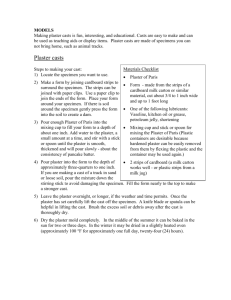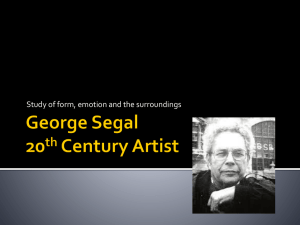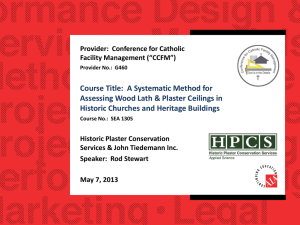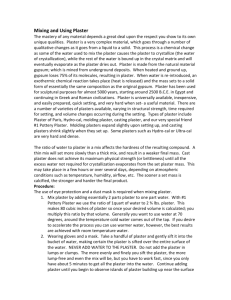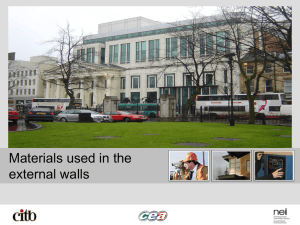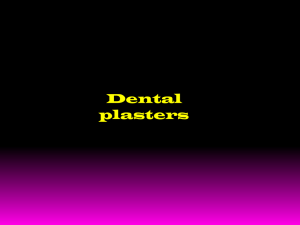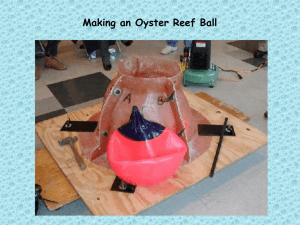PowerPoint
advertisement
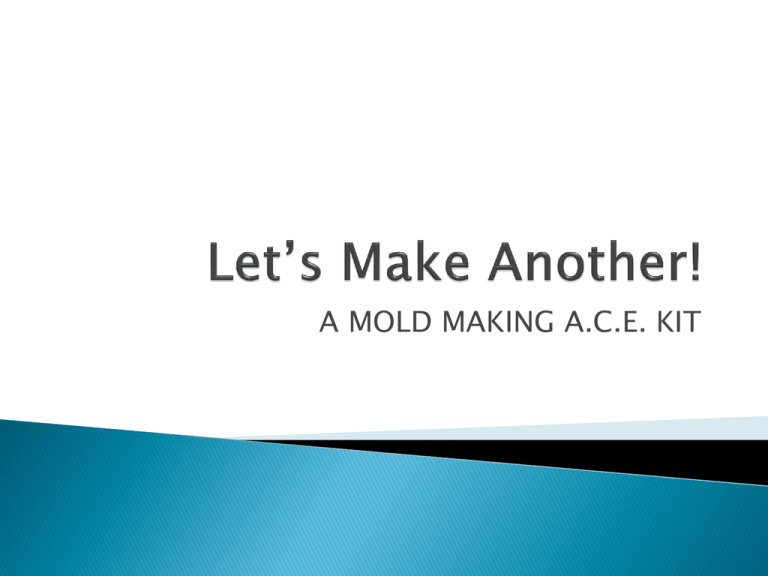
A MOLD MAKING A.C.E. KIT We will be making two different styles of molds out of plaster. We will learn some vocabulary to better communicate about making the molds out of plaster. We will decorate at least 1 of our molds to be able to show off our artistic skills. This kit is very messy. Make sure you tarp everything you don’t want to get plastered! Don’t pour the plaster down the drains. Dilute the leftover plaster and find an area outside to dump. This kit emphasizes the introduction to the craft. It can be easy to get lost in a single step, but push yourself to move forward to create both molds. There are many applications that use molding techniques. Once you are comfortable with the basics. Feel free to experiment. The warmer the water, the quicker the plaster will set. Step 1: Take half a stick of clay and press it into the small container. Smooth the clay surface with your thumb. Step 2: Carve out a pattern in the clay (Or one of your initials). Step 3: Mix Plaster of Paris with water. (2 parts plaster to 1 part water. Step 4: Pour mixed Plaster of Paris into the small container over the clay until the container is covered. Step 5: Wait approximately 15-20 minutes for the plaster to set. Buoyancy: An upward force exerted by a fluid that opposes the weight of an immersed object. An object whose density is greater than that of the fluid in which it is submerged tends to sink. If the object is either less dense than the liquid or is shaped appropriately (as in a boat), the force can keep the object afloat. Cast: A copy made in plaster, metal, rubber, or any other material that can solidify, of a three-dimensional form. Mold: The framework used to hold the casting material in order to create a duplicate of an object. (Or an original work) Negative Mold: A mold created by carving out or making an impression. The result of a negative mold is a positive cast. Positive Mold: A mold created with a raised relief. A positive mold makes a negative cast. Plaster: A building material that starts as a dry powder, then when mixed with water, it dries into a solid but brittle object. Plaster of Paris: A plaster made of Gypsum powder. Set (in reference to molding): To allow the Plaster of Paris to dry and solidify. Viscosity: A measure of the resistance of a fluid. For liquids, it corresponds to the informal notion of “thickness”. A higher viscosity (or thickness) allows for more buoyancy to for an object. (The higher the density of the liquid allows for a more dense object to float!) What fields and professions use a molding process? What common objects that we use and see on a daily basis have had parts created in a molding process? How does molding have an effect on all of our daily lives? Medicine Archaeology Biology Theatre Fine Arts Archticture Engineering Manufacturing Automobiles Jewelry Belt buckle Cell phones Remote control Lamps Light bulbs Windows Appliances Computers Televisions Cd’s and DVD’s Step 1: Ready your large container and provided chess piece. Step 2: Make sure your chess piece does not have any recessed points (the top of the rook). If it does, fill in the parts with a small amount of clay. Step 3: Mix Plaster of Paris with Water. (2 parts plaster to 1 part water) For these containers mix 1 cup of Plaster of Paris with ½ cup of water. Mix until it is smooth. Step 4: Pour the Plaster into the container. Step 5: Let it set for approximately 2 – 4 minutes. Step 6: Apply a thin coat of petroleum jelly to the chess piece Step 7: Gently lay the chess piece on its side in the plaster, with its base on the side of the plastic of the container. Make sure if the piece has a profile that it is laid on its side Step 8: Make sure it sinks only until it is half way submerged in the plaster. Step 9: Let it set for approximately 20 – 30 minutes. *If it is still warm, then it is still setting. Step 6: release the set plaster from the container. Step 7: Decorate with paints. *Take at least 20 minutes decorating These so the 2 part mold can set. Optional: Repeat steps 3-7 to create replicas of the same object!!! Step 10: Release the solid plaster from the container. Step 11: Release the chess piece from the plaster. (This can be difficult, but you can use your molding to help coax the piece out. Step 12: Put the chess piece back into the created first half of the mold, and apply more petroleum jelly to both the chess piece and the top of the mold. Step 13: Mix 1 ½ cup plaster with ¾ cups of water in a separate container. (You can create a large batch in one of the kit buckets so all can share.) Step 14: Pour the plaster into the large container covering the first piece of the mold and the chess piece. Step 15: Wait 20 – 30 minutes for the mold to set. Step 16: Release the mold from the container and separate the two pieces a=of the mold, as well as the chess piece. Step 17: With molding tools, clear the brittle plaster near the base away to create the hole. *At this point the mold is complete Step 1: Cover both sides of the mold with petroleum jelly. Step 2: Match both sides of the mold with each other and press together. Keep them connected with the provided rubber bands. Step 3: Place the mold hole side up in the large container. Step Step Step Step Step Step 4: 5: 6: 7: 8: 9: Mix 2 parts plaster to one part water. With provided syringes, inject the plaster into the mold. Let set for 20-30 minutes. Release the piece from both sides of the mold. Decorate. Repeat and create a menagerie.


